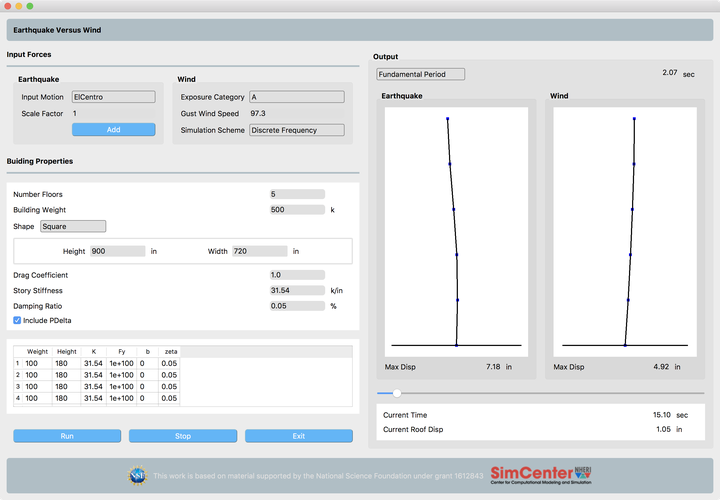This educational application allows the user to compare the responses of buildings subjected to earthquake and wind loading.
The building is represented by a shear building model: an idealization of a structure in which the mass is lumped at the floor levels and the beams are assumed infinitely stiff in flexure and axially inextensible, and the columns are axially inextensible. The user inputs the floor weights and story properties (stiffness, yield strength, hardening ratio) of the stories, and a damping ratio for the structure. The user selects from a series of included ground motion acceleration records, or user provided motions.
The user can quickly explore the effect of changing weight, height, and stiffness on the tine history response. In addition nonlinear effects due to P-Delta and soft story mechanisms can be studied.
For earthquakes, the loading is applied using a uniform excitation approach in which forces are applied at floor level using inertial forces. For wind, the forces are determined at floor level using a stochastic process that takes into account gust speed, exposure category, drag coefficient and building parameters such as height and width.
Links:
Join the User Forum Conversation:
How to cite:
Frank McKenna. (2018, June 30). EVW Application (Version 1.0.0). Zenodo. http://doi.org/10.5281/zenodo.1410695
Deierlein, G.G., McKenna, F., et al. (2020). A Cloud-Enabled Application Framework for Simulating Regional-Scale Impacts of Natural Hazards on the Built Environment. Frontiers in Built Environment. 6, 196. doi: 10.3389/fbuil.2020.558706.

